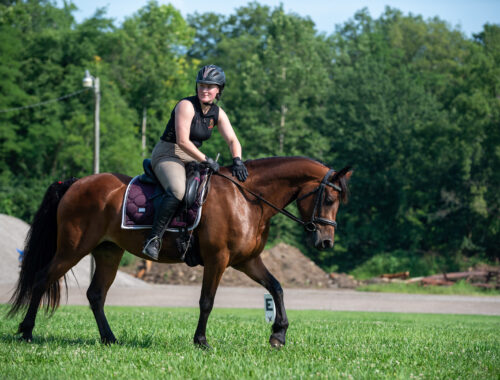The Canter
What is the Canter?
A “three-time” gait where the hind leg strikes off followed by the opposite and diagonal fore leg and then the opposite foreleg (a.k.a. – the lead leg) followed by a moment of suspension.
How to Execute the Canter
Start in the trot.
Flex the horse at the poll to the inside slightly.
Half halt on the outside rein to preapre him for the transition.
At the same time, move the outside leg behind the girth and give direct pressure with the inside calf.
At the moment the horse goes to strike off, move the inside hand forward ever so slightly.
Notes:
The transition to canter can occur from the walk and the halt also. These transitions require a greater degree of strength fro m the hindquarters.
It is often best to ask the young horse to canter going towards the rail or corner, to aid in picking up the correct lead and to prevent any unwanted departures.
Schooling the canter depart on curved lines can also promote straightness in the horse.
Utilizing the leg yield on the circle can also assist the horse in picking up the correct lead.
Purpose of the Canter
To improve the horse’s relaxation and suppleness, especially in downward transitions from the canter.
To improve the horse’s coordination.
Common Errors in Execution
The horse requires multiple attempts to achieve the canter.
The horse picks up the incorrect lead.
The horse is against the rider’s hand
The horse is tight in the neck.
The horse is on the forehand.
The horse breaks into the trot when riding walk/canter transition
The horse is crooked.
The horse kicks out as an objection to the rider’s leg
The rider timing of the aids is off.
The rider uses too much spur.
The rider’s upper body falls forward.
Author: Dressage Academy
The 20-Meter Circle
Free Walk
You May Also Like

Rhythm – Let’s Get into the Groove Newsletter
March 28, 2018
Wednesday Wisdom – What is Connection?
August 13, 2025